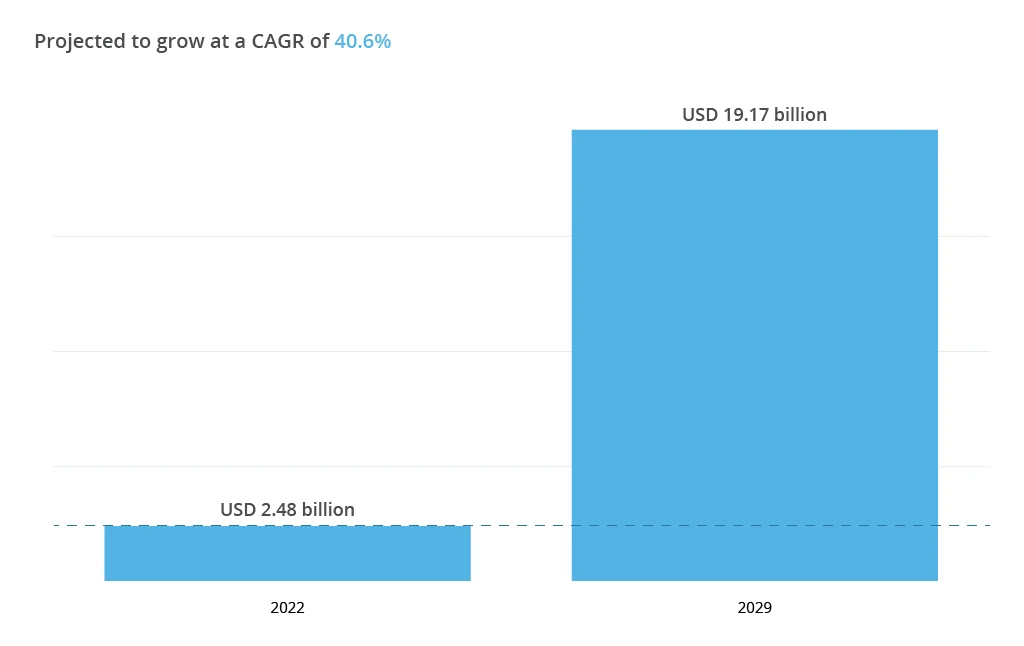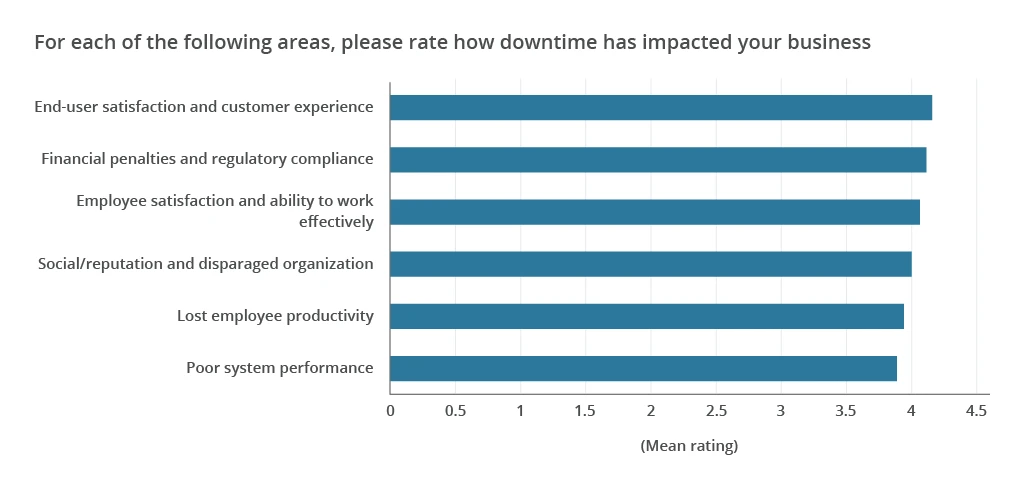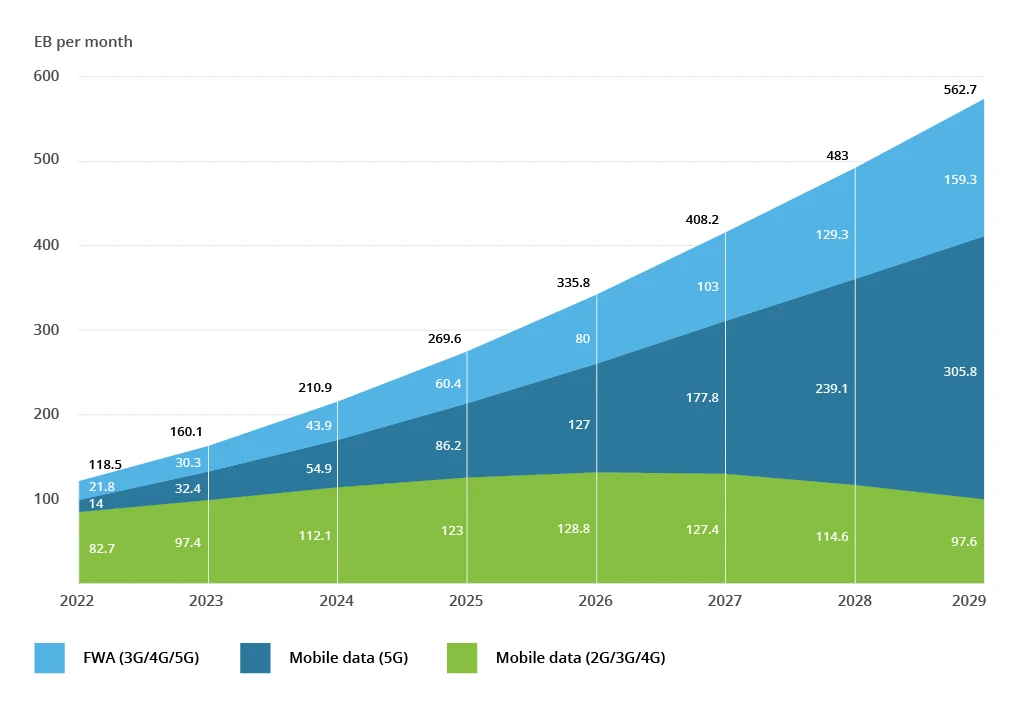Telecom Network Optimization with the Help of AI: Challenges and Solutions
Our ever-growing reliance on mobile data creates a constant strain on telecom networks. Imagine video calls buffering endlessly, or important downloads grinding to a halt. These frustrating experiences highlight the critical challenge of network optimization — ensuring efficient data flow to meet the skyrocketing demands of users.
The advent of AI for telecom charts a new course. A year after the launch of the most well-known example of GenAI — ChatGPT, AI has transcended theoretical frameworks and is now actively transforming industries.
The global AI in telecommunications market is projected to reach a remarkable $19.17 billion by 2029. This exponential growth is fueled by the increasing adoption of AI across various applications within the telecommunications landscape, coupled with the proliferation of AI-powered smartphones.
However, the story goes beyond mere market figures. The advent of 5G technology presents novel and intricate challenges for mobile communications service providers. To address these complexities and optimize capital expenditure, AI-based solutions are emerging as the go-to answer.
This article delves deeper into the specific applications of AI within the telecommunications industry and explores how this technology is shaping the future of our connected world.
Read more about the role of AI for the entire telecom industry in this article!
What is Network Optimization in Telecom: Key Components
AI-powered network optimization isn't a single entity, but rather a powerful combination of several methods working together. Let’s look at some of the crucial ones.
Traffic Shaping
Traffic shaping, also known as packet shaping, involves regulating network data transfer to ensure efficient bandwidth usage and to maintain quality of service (QoS). AI enhances traffic shaping by:
- Predictive analysis. The cost of downtime per hour has gone up by at least 50% in just two years. This has resulted in certain sectors facing costs of $2 million per hour due to unplanned downtime. Predictive analysis plays a crucial role in reducing downtime — AI algorithms can predict traffic patterns based on historical data and real-time inputs, identifying potential peak times and types of traffic (e.g., video streaming, web browsing). This allows for proactive adjustments in bandwidth allocation, ultimately helping to prevent downtime.
- Real-time prioritization. AI can dynamically prioritize traffic based on its importance, latency sensitivity, and bandwidth requirements. For instance, real-time applications like VoIP or gaming can be given priority over less sensitive tasks.
- Anomaly detection. AI models can detect anomalies in traffic that might indicate a DDoS attack or network malfunction, allowing for immediate mitigative actions to be taken to maintain network integrity and performance.
Load Balancing
Load balancing involves distributing network traffic across multiple servers or pathways to optimize resource use, maximize throughput, minimize response time, and avoid overload on any single resource. AI enhances load balancing through:
- Preemptive measures. By analyzing trends and predicting future traffic flows, AI algorithms can redistribute loads before congestion or bottlenecks occur, ensuring smoother network operation.
- Adaptive algorithms. AI can continuously learn from network conditions, adapting load balancing strategies in real-time to respond to changing network demands and topology alterations.
- Efficiency optimization. AI can identify the most efficient paths for data packets, taking into account factors like latency, packet loss, and current load, ensuring optimal performance across the network.
Protocol Optimization
Network protocols define rules and conventions for communication between network devices. Fine-tuning these protocols is crucial for optimizing performance. AI contributes to this by:
- Parameter optimization. AI algorithms can analyze the performance impact of different protocol parameters under various conditions, automatically adjusting them to improve efficiency and reliability.
- Protocol adaptation. Based on the AI's understanding of current network conditions and performance requirements, it can suggest or implement modifications to protocol behavior that better align with current needs, such as enabling TCP Window Size Scaling at the end devices for better throughput under varying network conditions.
- Congestion control. AI can enhance protocols' congestion control mechanisms, predicting congestion before it happens and adjusting rates preemptively to avoid packet loss and ensure smooth data flow.
Learn more about tech trends in telecom here!
How AI Can Improve Telecom Networks Performance
1. Predictive Maintenance
The Challenge: Unplanned network outages caused by equipment failures disrupt services, inconvenience customers, and lead to substantial revenue losses. Imagine the frustration of millions of users when their internet connection suddenly drops during their important business video calls or while streaming their favorite shows. Downtime can lead to a significant loss of customer satisfaction and loyalty, potentially prompting them to switch to competitors.
AI-Powered Solution: By examining historical network data patterns and user behavior, artificial intelligence algorithms can help forecast prospective network issues in advance. The result is continuous network performance, little downtime, and the ability to fix issues before they even arise thanks to proactive maintenance.
For instance, AI can analyze patterns in traffic fluctuations, signal strength variations, and equipment performance metrics. This allows for the identification of potential bottlenecks and equipment failures before they escalate into major outages. Additionally, AI can optimize resource allocation through adjusting network configurations based on real-time data, ensuring efficient use of bandwidth, and minimizing congestion.
- AI-based systems can learn network configurations and automate the generation of more accurate configurations.
- Configuration changes are validated before deployment, which significantly reduces human error.
- AI orchestrates the provisioning of new network elements and services, speeding up time-to-market.
2. Automated Network Configuration
The Challenge: Manual configuration of sprawling telecom networks is error-prone, time-consuming, and hinders rapid service deployment. Network complexity is further increasing with the advent of 5G and network virtualization technologies. Errors in network configuration can degrade customer experience and delay service rollout.
AI-Powered Solution:
- AI-based systems can learn network configurations and automate generation of more accurate configurations.
- Configuration changes are validated before deployment, which significantly reduces human error.
- AI orchestrates the provisioning of new network elements and services, speeding up time-to-market.
3. Fraud Detection
The Challenge: Despite preventive measures, telecommunications fraud surged by 12% in 2023, resulting in a substantial $38.95 billion loss, which is equivalent to 2.5% of total sector revenues. Fraudulent activities like subscription fraud, SIM box fraud, and international revenue share fraud are a multi-billion-dollar problem for the telecom industry. A report by the CFCA estimates that fraud costs telecom companies globally almost $40 billion annually.
AI-Powered Solution:
- AI models analyze vast datasets, including call detail records (CDRs), subscriber data, and network traffic patterns.
- Anomalous behavior, such as unusual call durations, high volumes of international calls, or strange call termination patterns, are flagged in real-time.
- AI-driven systems can also analyze user behavior patterns to create unique behavioral profiles for each user, helping to detect account takeovers or identity theft.
- Machine learning algorithms adapt and refine their detection capabilities, ensuring that they stay ahead of evolving fraud schemes.
Overall, organizations leveraging security AI and automation extensively achieve an average savings of $1.76 million, in contrast to those that do not utilize such technologies.
4. Service Quality Management / Customer Service
The Challenge: Maintaining reliable and high-quality service across complex networks with a multitude of technologies presents a major operational hurdle, since it requires continuous monitoring and troubleshooting. At the same time, poor service quality leads to decreased customer satisfaction, churn, and revenue loss. Actually, 63% of consumers would leave a brand because of poor customer experience.
AI-Powered Solution:
- Network optimization. AI continuously analyzes network data (latency, packet loss, jitter) to pinpoint service issues and optimize resources, ensuring a superior customer experience. Ericsson's collaborations with industry leaders like Swisscom and TDC confirm that optimization yields significant benefits, including a 15% increase in user experience and a 70% decrease in customer complaints.
- Virtual assistants. According to Salesforce, 56% of service organizations are exploring AI technologies that could automate tasks typically requiring human interaction, potentially freeing up customer service reps for higher-value tasks. These AI assistants operate 24/7, instantly answering inquiries, personalizing support across languages, and guiding customers to self-service options. Not only does this boost efficiency and customer satisfaction by freeing human agents from complex issues but also provides valuable insights from interactions to improve products and services.
- Churn reduction. AI analyzes historical data to predict customer churn risk and recommend targeted interventions (offers, plan adjustments) for high-risk customers. Real-time alerts and churned customer analysis help address systemic issues and reduce overall churn.
5. Capacity Planning
The Challenge: Mobile network data traffic worldwide is expected to increase substantially.
A 2023 report claims that during peak hours, global internet traffic can increase by as much as 40% compared to off-peak hours. Explosive growth in data traffic makes forecasting future network demand and planning capacity expansions exceedingly complex. Overprovisioning leads to wasted resources, while underprovisioning leads to congestion and degraded customer experience.
AI-Powered Solution:
- AI algorithms dissect historical traffic patterns, demographic data, subscriber trends, and data from external events (major events, weather).
- Using precise demand forecasting models and comprehensive analysis, AI generates highly accurate predictions of future network demand, enabling proactive capacity planning and resource allocation.
- AI recommends capacity adjustments and network upgrades to accommodate fluctuating demand, ensuring optimal utilization of resources, and maintaining consistent service quality.
- Analyzing network performance data, AI can recommend the most suitable configurations for network elements like base stations and routers. This ensures better network performance, maximizes data throughput, and seamless user experience.
Case in point. Vodafone enhanced its network planning decisions through advanced software capable of analyzing up to eight billion data points daily across its mobile network in 11 countries. The platform, known as United Performance Management (UPM), utilizes AI tools from Google Cloud and other associated services for analysis. Leveraging real-time insights from UPM led to a significant 70% decrease in major network and IT incidents for Vodafone, allowing staff to focus on other important duties.
6. Energy Conservation
Challenge: The ever-increasing demand for data translates to a higher energy footprint for telecom networks. This not only raises operational costs but also presents environmental concerns. GSMA report highlighted that the telecommunications sector accounts for around 3% of global electricity consumption, which necessitates exploring sustainable solutions.
AI-Powered Solution: Since AI continuously analyzes network traffic patterns and user behavior in real-time, it can help dynamically adjust network configurations and optimize power consumption levels of network equipment. This data-driven approach significantly minimizes energy usage without compromising service quality. By optimizing energy consumption, AI contributes to a more sustainable future for the telecommunications industry. For example, Nokia suggests that AI energy management for mobile networks can yield significant advantages, including up to 30% overall energy savings and up to five times more power savings compared to non-AI systems that rely on fixed schedules for temporary shutdowns.
Conclusion: AI's Expanding Role in Telecom Networks Optimization and Beyond
While AI has already begun its transformative journey in optimizing telecommunication networks, its potential extends far beyond the current applications. The future holds an array of possibilities, where AI-powered network slicing, self-healing networks, personalized services, and convergence with edge computing will unlock new levels of connectivity, efficiency, and user satisfaction. However, to fully harmonize this symphony, it's crucial to address challenges like data security and transparency through collaborative efforts and continuous innovation. As we embrace AI and its potential in telecommunications, we pave the way for a truly intelligent and connected future for all.
![AI in Telecom Network Optimization [MB]](https://www.infopulse.com/uploads/media/banner-1920x528-ai-in-telecom-network-optimization.webp)







![Telecom Tech Trends [Thumbnail]](/uploads/media/thumbnail-280x222-what-is-hot-in-telecom-nine-tech-trends-to-impact-the-industry-in-2024.webp)







